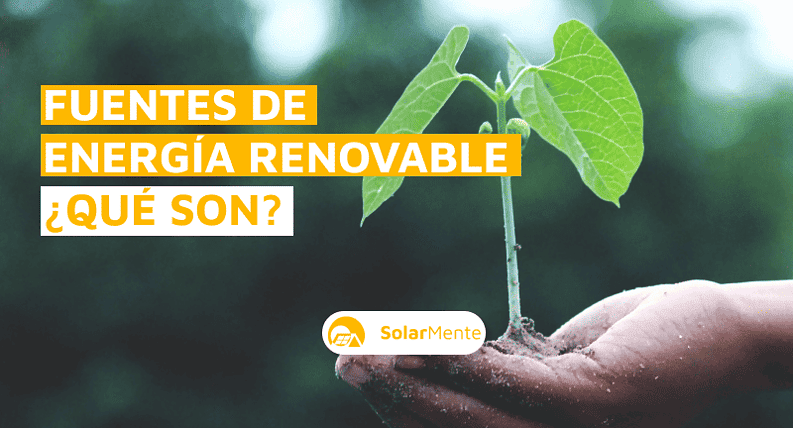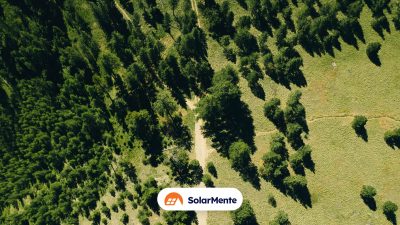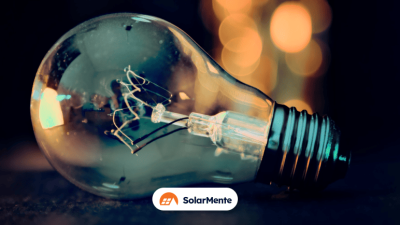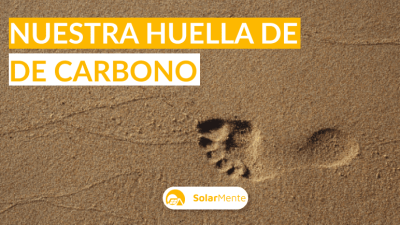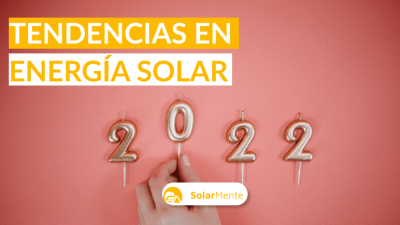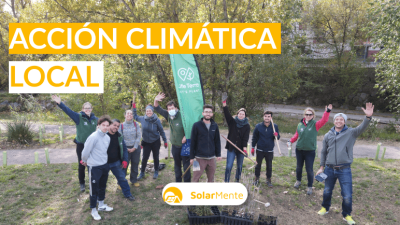Renewable energies are abundant or inexhaustible sources whose energy production comes from natural resources, i.e. there will be no supply problems in the future. Furthermore, most renewable energy sources are classified as clean energy, i.e. they do not have a negative impact on the environment.The perceived growth in recent years has shot up significantly and
it is estimated that 44% of electricity supply will come from renewables by 2040, mainly from wind and photovoltaic energy, according to the latest
report published by the IEA.
In this article, we will take a closer look at the concept of renewable energies, the types that can be found, the advantages and current developments in Spain.
What are renewable energies?
Renewable energies are those obtained from natural resources that produce inexhaustible energy. They differ from fossil fuels in their diversity, abundance and potential for use anywhere on the planet. And, above all, they
do not produce greenhouse gases, which cause climate change.Moreover, their costs are steadily decreasing, while the general trend for polluting sources is the opposite. In the case of
solar energy,
the price of solar panels has fallen by 80% in the last decade.
Types of renewable energy
The renewable energy sources that can be found are the following.
Solar energy
Solar energy is a source of renewable origin that is obtained from the sun’s electromagnetic radiation, as well as being a natural and inexhaustible source, in this case, we can differentiate between two types:
- Photovoltaic energy: electricity is obtained through energy production generated by photovoltaic solar installations.
- Thermal energy: heat is generated by solar collectors, transforming the radiation into heat energy.
Photovoltaic solar energy
Photovoltaic solar energy has made numerous advances over the last few years, standing out from other types of energy. This has led to a reduction in the cost of installing solar panels, making it
one of the technologies with the greatest potential and one of the main alternatives to be used in the future. The use of solar energy for self-consumption in private homes has undergone an exponential increase that deserves special mention, although applications have been extended to other types of installations such as shops, industrial spaces and solar parks.Best of all, it emits no greenhouse emissions, is inexhaustible and clean.
The perfect choice to opt for a sustainable energy model in our homes where we leave dependence on the conventional electricity grid to one side.
The only small disadvantage is that we cannot enjoy our solar panels during the night as there is no radiation.
Is there a solution to this? By using storage batteries. The prices are still somewhat high, but work is underway to bring the cost down in the next few years.
In any case, the advantages of photovoltaic solar energy are clear and it is becoming more and more affordable for households.
Solar thermal energy
Solar thermal panels, on the other hand, convert the sun’s radiation into heat energy, which is frequently used in homes to heat water, for heating and for cooking.But is it not used on a large scale like photovoltaics? The high costs and constant maintenance have led to the abandonment of these installations for domestic use.
What is indisputable is the success it has had in Spain due to its low prices, especially in new build houses, where installing a system that uses renewable energy is a must.
Wind energy
The generation of energy is carried out with the force of the wind. The windmills located in wind farms are connected to electricity generators that transform the wind into electrical energy by turning their blades. Although there are cases of domestic use with mini-generators that produce energy for the home, especially for isolated installations, it is more normal to see this type of installation in large wind farms, whether on land or even at sea.
Hydropower
Hydropower
produces electricity from the movement of waterby harnessing the kinetic energy and activity of water, be it currents or tides. This force turns a turbine connected to a transformer that allows this movement to be converted into electrical energy for consumption.Where can we see the production of hydraulic energy? A clear example is dams located in geographical areas where there is a considerable difference in height and constant rainfall.
It is an inexhaustible, renewable and non-polluting source.
The dilemma lies in the construction of the dams, which must be built in an appropriate manner so as not to have a negative impact on the environment.
Biomass and biogas
It is obtained through the combustion of organic matter, such as industrial oil waste, animal excrement or waste from tree pruning.To clarify, this is a biofuel that allows us to have heating, electricity and fuel in our homes. Some boilers use wood waste, but it can also be used as fuel.
The potential of biomass has not yet been sufficiently exploited in Spain, constituting only 1% of the total. In contrast, other countries in the European Union (EU) are opting for this energy source at a higher rate than other regions in the world. In fact, 60% of the EU’s energy consumption comes from biomass.
Geothermal energy
Another source of renewable energy is geothermal energy. It uses heat from the earth’s interior to generate electrical energy. The deeper the earth is, the higher the temperature will be, and at such a steep depth, the water heats up and causes various reactions that are used for energy production or for use in hot springs and spas. It can also be used to produce hot water for sanitary purposes or in air-conditioning systems.This source of energy can be found all year round, but some consequences have been detected, such as the release of hydrogen sulphide or water pollution near these installations.
Tidal energy
Its similarity with hydropower is clear. Both sources use water to produce energy, the difference being that tidal power generates electricity from the tides, but it is not yet cost-effective enough to use. It costs more than the amount of energy it can produce.In any case, other types of energy are appearing that make use of water to obtain electricity, such as marine currents, salinity or different temperatures depending on the depth.
Advantages of renewable energy sources
Renewable energy sources have the following advantages:
- They reduce energy dependence on the conventional grid.
- Their costs have decreased, making them the solution and alternative to fossil fuels.
- No or low negative impact on the environment. They do not emit greenhouse gases to obtain energy.
- They fight against climate change.
- They are inexhaustible.
Renewable energies in Spain: an analysis of the current situation and future objectives.
Spain’s potential for generating renewable energy sources is increasingly visible. In 2021 it climbed up the rankings to become
the eighth country in the world with the highest renewable energy capacity, with 59,108 MW of installed renewable energy capacity, according to statistics provided by the International Renewable Energy Agency (IRENA).If we break down each of the energy sources, wind power is in fifth place, while solar photovoltaic is still outside the top ten. There is still work to be done, but the new
subsidies for self-consumption are making it possible, year after year, to take advantage of this energy in our homes.
Spain and the rest of the European Union countries have set targets to be met by 2030 to achieve a change in the energy industry with policies that lead to the integration of an energy system based on sustainability.
To this end, the commitment is clear: the use of renewable energy sources must increase in order to halt the rapid advance of climate change, as shown by the Climate Change and Energy Transition Act , which was launched in May 2021.
It is important to meet the targets set for that date if we want to curb climate change in time. We have the technology to make these changes and commit to a sustainable model that is beneficial for the planet and the population.
What is distributed generation?
Distributed generation consists of the production of electricity by many small sources, as opposed to traditional, large, centralised production by a few generation centres.
Distributed generation will be key in the future as it can change the way in which we generate electricity, where until now, the traditional model has consisted of large production centres that distributed electricity to where it was needed.
What are renewable energies?
Renewable energies are those obtained from natural sources that produce energy inexhaustibly and indefinitely. For example, solar energy.
Are there any subsidies for solar energy?
Yes: with regard to environmental impact, thanks to the strong increase and investments in this sustainable energy industry, at national level in 2020 greenhouse gas emissions produced by electricity generation in Spain were reduced by 14 million tonnes of CO2 (carbon dioxide) equivalent compared to the previous year.
From 50 million tonnes in 2019, it went to just over 36 million (taking into account an emission factor of the Spanish electricity system of 0.19 tC02 in 2019. Source: REE C02 emissions associated with electricity generation in Spain).
SolarMente is committed to clean energy
We are working to ensure access to clean energy, reduce the effects of the climate emergency and accelerate the shift to a decarbonised energy system. new technologies will continue to evolve and renewable energies, such as solar, will improve even further. We will have benefits for all homeowners to have the ability to consume 100%
green energy.By installing battery-compatible power systems and electric car chargers in the future, we will enable you to integrate it all, along with technology to optimise your savings. So, as electric vehicles become more widespread, you’ll be able to recharge from the comfort of your own home.
If you want to make a positive impact on the planet and save money by installing solar panels on your roof, try our self-consumption calculator and watch your monthly electricity bill go down.

